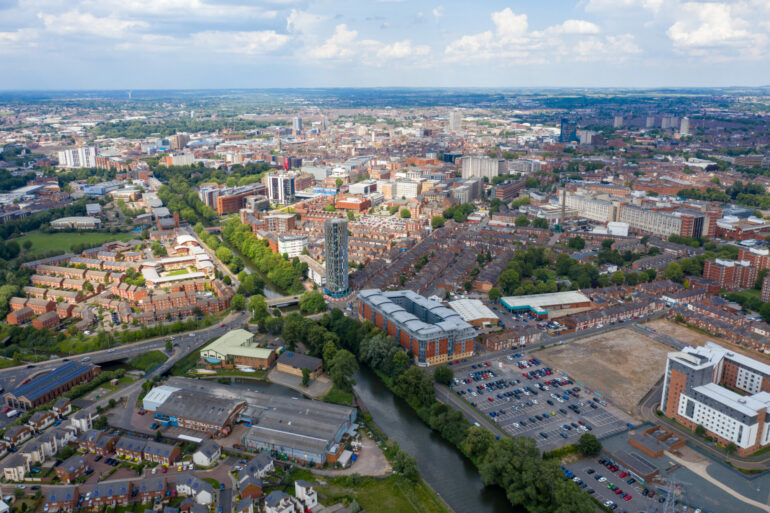The construction sector gained momentum throughout October, with total industry activity rising at the fastest pace since May, according to the latest S&P Global UK Manufacturing Purchasing Managers’ Index (PMI).
Research showed that construction activity was up 53.2 in October from 52.3 in September, with big increases seen across commercial and residential sectors.
Despite signalling a solid recovery in business activity from the downturn seen this summer, construction companies indicated that growth expectations for the year ahead remained very subdued, as the overall degree of optimism fell sharply since September and was the lowest for almost two-and-a-half years.
Tim Moore, economics director at S&P Global Market Intelligence, said: “Construction output has staged a modest recovery after the downturn seen through much of this summer, with growth hitting a five-month high in October.
“However, the forward-looking survey indicators highlight that growth will be harder to achieve in the coming months as rising borrowing costs, economic uncertainty and cost constraints all had a negative influence on order books in October.
“The reduction in total new work was the first since May 2020 and this fuelled increased concerns about longer term tender opportunities.
“Construction firms cited concerns about a broad-based decline in client demand due to cutbacks on non-essential spending among clients, although some noted that growth linked to green energy projects, planned infrastructure spending and success in niche markets could help to offset the UK economic headwinds.”
Moreover, total new orders decreased slightly in October, which ended a 28-month period of sustained expansion.
As well as this, construction companies noted weaker confidence among clients, alongside headwinds from rising input prices and higher borrowing costs.
Some firms also reported a drop in new work due to heightened political uncertainty.
Despite a turnaround in supply chain pressures, latest data signalled another steep increase in average cost burdens across the construction sector.
Higher purchasing prices were overwhelmingly linked to greater energy costs, fuel bills and the pass through of rising wages.
Looking forward, construction firms remained relatively downbeat about their growth projections for the year ahead.
Dr John Glen, chief economist at the Chartered Institute of Procurement & Supply, said: “The construction sector offered a small improvement in output compared to September, maintaining its place in growth territory and rising at the fastest rate for almost six months.
“However, this positive result offered little in terms of comfort even though purchasing activity also rose and supply chain performance returned to near-normal levels, the sector remained under pressure from all sides.
“New business levels dropped for the first time since May 2020 so this momentum in output levels mostly came from projects in hand or those delayed rather than fresh assignments.
“The UK is entering a recession and higher borrowing costs are intensifying these challenges, which combined to drag down builder optimism about the year ahead to its lowest level since May 2020.”
Around 33% of the survey panel anticipate a rise in business activity, while 26% predict a decline.
The resulting index signalled the lowest degree of optimism since May 2020.
Many companies commented on recession worries and a drop in UK economic prospects due to rising political uncertainty.
Joe Garner, managing director at London-based property developer NewPlace, added: “The construction and development sector thrives in stable market and economic conditions from labour and materials to interest rates and house price growth. And right now, we have anything but.
“The biggest threat currently to the construction sector is rising interest rates, which impact both demand and development finance costs, and a lack of government assistance for first-time buyers, low income families and key workers.
“Following recent rate rises that were out of sync with previous market expectations, many SME developers, brokers and financiers were caught out “mid-deal”, resulting in higher finance costs, a reduction of affordable senior debt and an increase in more expensive mezzanine loans and equity investment into schemes.
“Furthermore, without a valid replacement for Help to Buy, it is difficult to plan for the next development cycle, which can be anywhere between 12 and 36 months for SME developers.
“We need to at least have a decent idea of how, and with what support, first-time buyers will be able to purchase new build properties.”
Dorian Payne, director of Swansea-based property developers, Castell Group, concluded: “The underlying fact is there are just not enough houses being built and demand is still there despite rate rises.
“Therefore, development will continue but the sales market will have to be more elastic and sensitive to pricing and perhaps require incentives.
“A key focus for us, as a developer, will be trying to ‘forward-sell’ and lock in our sales to minimise market risk as much as possible.”




